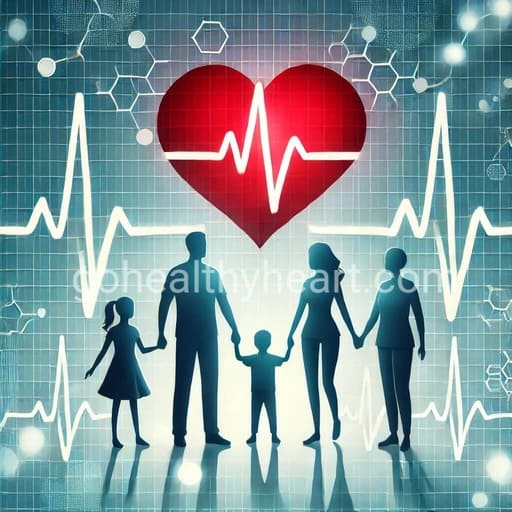Chest Pain in Women: 12 Warning Signs You Shouldn’t Ignore (2025 Guide)

According to recent medical studies, heart disease presents differently in women than in men, yet many women wait longer to seek medical attention for chest pain. Understanding how chest pain manifests uniquely in women can be life-saving, as symptoms are often subtler and easily dismissed. This comprehensive guide will help you recognize important warning signs and know when to seek immediate medical care.
Understanding Chest Pain in Women
Women experience heart problems differently than men, often leading to delayed diagnosis and treatment. While men typically experience crushing chest pain, research shows that women may have more subtle or different symptoms altogether. This difference is particularly significant in Indian women, where cultural factors and traditional roles may influence how symptoms are reported and addressed.
Key Differences in Female Chest Pain
As noted by Manipal Hospitals, unlike the dramatic chest clutching often portrayed in movies, women’s chest pain can manifest as:
- Pressure or tightness in the chest that comes and goes
- Discomfort that spreads to the back, neck, or jaw
- A feeling of fullness, squeezing, or burning
- Pain that worsens with emotional stress
- Discomfort that may be dismissed as indigestion
Types and Causes of Chest Pain
Cardiac Causes
Coronary Artery Disease
- Blocked or narrowed heart arteries
- More common in post-menopausal women
- Risk increases with diabetes and hypertension
Microvascular Disease
- Affects smaller coronary arteries
- More prevalent in women than men
- Often missed in traditional testing
Stress Cardiomyopathy
- Also known as “broken heart syndrome”
- More common in women after emotional stress
- Can mimic heart attack symptoms
Non-Cardiac Causes
- Anxiety or panic attacks
- Acid reflux or GERD
- Musculoskeletal pain
- Respiratory infections
- Costochondritis (inflammation of chest wall)
Warning Signs Specific to Women
Primary Symptoms
Chest discomfort that may feel like:
- Pressure or squeezing
- Fullness or burning
- Mild to severe pain
- Tightness or aching
Upper body discomfort in:
- Neck and jaw
- Shoulders
- Upper back
- Either or both arms
Secondary Symptoms
- Unusual fatigue
- Shortness of breath
- Nausea or vomiting
- Cold sweats
- Lightheadedness
- Sleep disturbances
- Indigestion
- Anxiety
When to Seek Emergency Care
Call Emergency Services Immediately If:
- Chest pain lasts more than 5 minutes
- Pain is accompanied by shortness of breath
- You experience severe weakness or fainting
- Symptoms worsen with physical activity
- You have a family history of heart disease
Red Flag Combinations
Seek immediate medical attention if chest pain occurs with:
- Difficulty breathing
- Severe nausea or vomiting
- Loss of consciousness
- Heavy sweating
- Radiation of pain to jaw or arms
Prevention and Risk Management
Lifestyle Modifications
Diet Recommendations
- Reduce saturated fats
- Limit salt intake
- Include heart-healthy foods like:
- Whole grains
- Legumes
- Fresh fruits and vegetables
- Nuts and seeds
Physical Activity
- Aim for 30 minutes daily
- Include both cardio and strength training
- Start slowly and build gradually
- Consider yoga or walking
Stress Management
- Practice meditation
- Regular breathing exercises
- Adequate sleep
- Work-life balance
Regular Health Screening
- Annual health check-ups
- Blood pressure monitoring
- Cholesterol testing
- Blood sugar screening
- ECG after age 40
Special Considerations for Indian Women
Cultural Factors
- Prioritizing family over personal health
- Delayed medical attention
- Traditional medicine preferences
- Dietary considerations during fasting
Healthcare Access
- Know your nearest cardiac care center
- Keep emergency numbers readily available
- Maintain medical records
- Build a support system
Prevention Tips
Regular Exercise
- Start with walking 15-20 minutes daily
- Gradually increase duration and intensity
- Include strength training
- Consider group activities for motivation
Healthy Diet
- Balance traditional Indian meals
- Control portion sizes
- Include proteins in vegetarian diets
- Limit processed foods
Stress Management
- Regular meditation
- Family support systems
- Professional counseling when needed
- Time management
Conclusion
Understanding chest pain symptoms in women, particularly within the Indian context, is crucial for early intervention and better outcomes. Don’t ignore unusual symptoms or delay seeking medical attention. Remember, women often experience heart problems differently than men, and early recognition of symptoms can be life-saving.
Quick Action Guide
- Know your risk factors
- Recognize female-specific symptoms
- Keep emergency numbers handy
- Don’t delay seeking help
- Regular preventive check-ups
FAQs
Q: How does chest pain in women differ from men?
A: Women often experience more subtle symptoms like pressure or tightness rather than the classic crushing pain. Pain may also spread to the back, neck, or jaw.
Q: What are the warning signs of heart attack in women?
A: Key warning signs include chest pressure, shortness of breath, nausea, back or jaw pain, and unusual fatigue.
Q: When should women seek emergency care for chest pain?
A: Seek immediate medical attention if pain lasts more than 5 minutes, is accompanied by shortness of breath, or includes other symptoms like nausea and sweating.
Q: Are heart attack symptoms different in Indian women?
A: While basic symptoms are similar, Indian women may face additional challenges due to cultural factors and delayed medical attention.
Q: What causes non-cardiac chest pain in women?
A: Common causes include anxiety, acid reflux, muscle strain, and respiratory infections.
Q: How can women reduce their risk of heart problems?
A: Through regular exercise, a balanced diet, stress management, and regular health screenings.
Note: This article is for informational purposes only and should not replace professional medical advice. Always consult a healthcare provider for specific medical concerns.




One thought on “Chest Pain in Women: 12 Warning Signs You Shouldn’t Ignore (2025 Guide)”
Comments are closed.